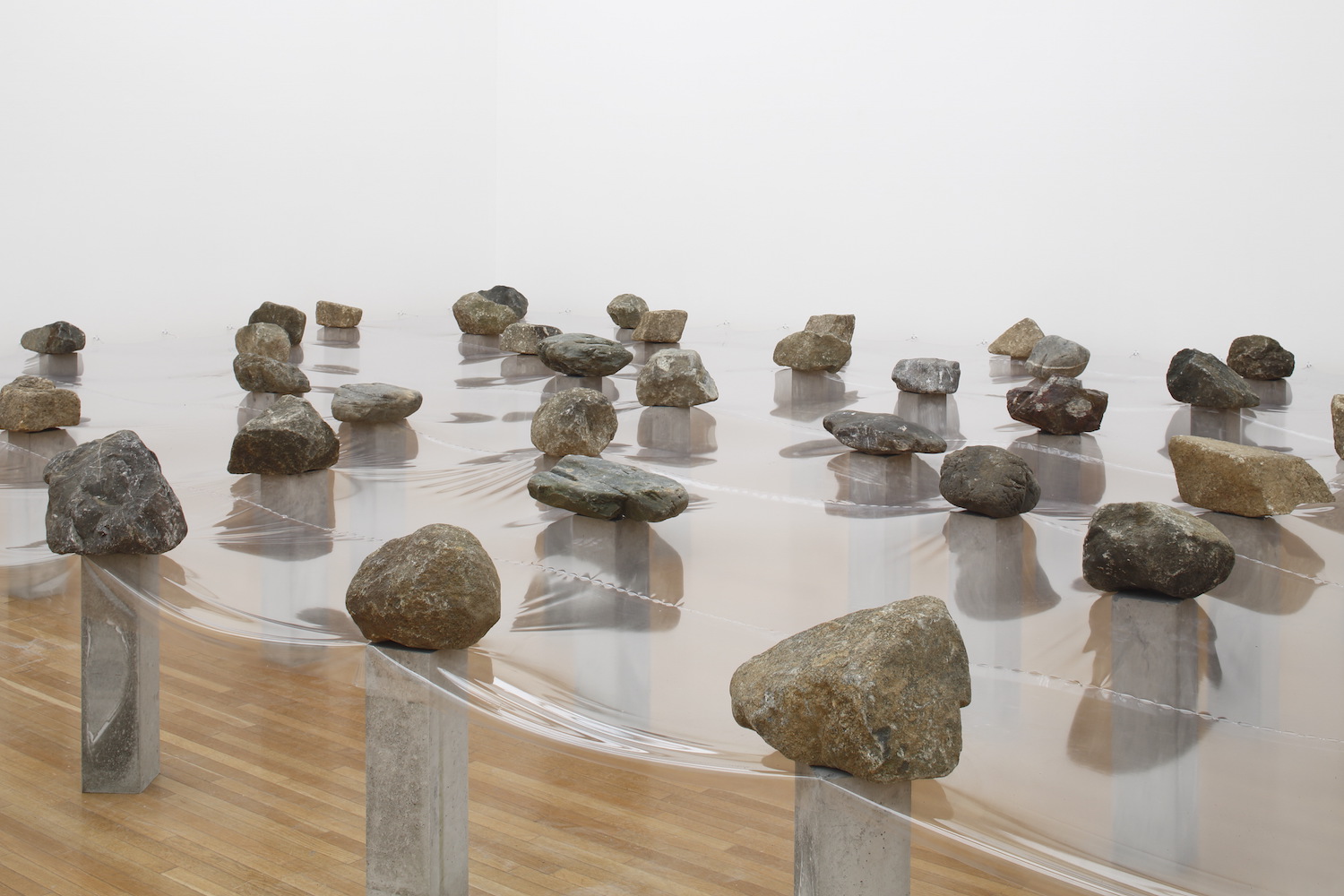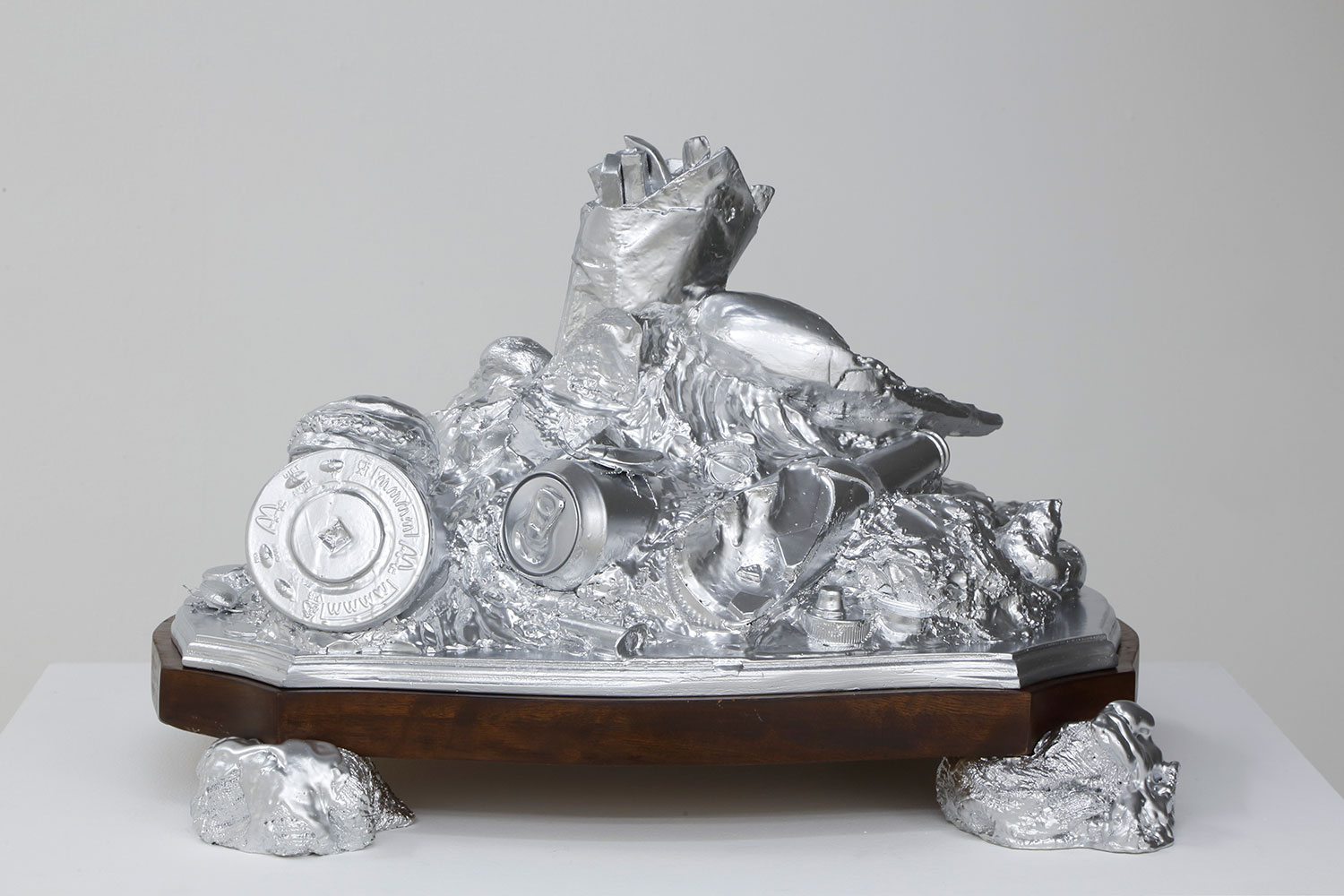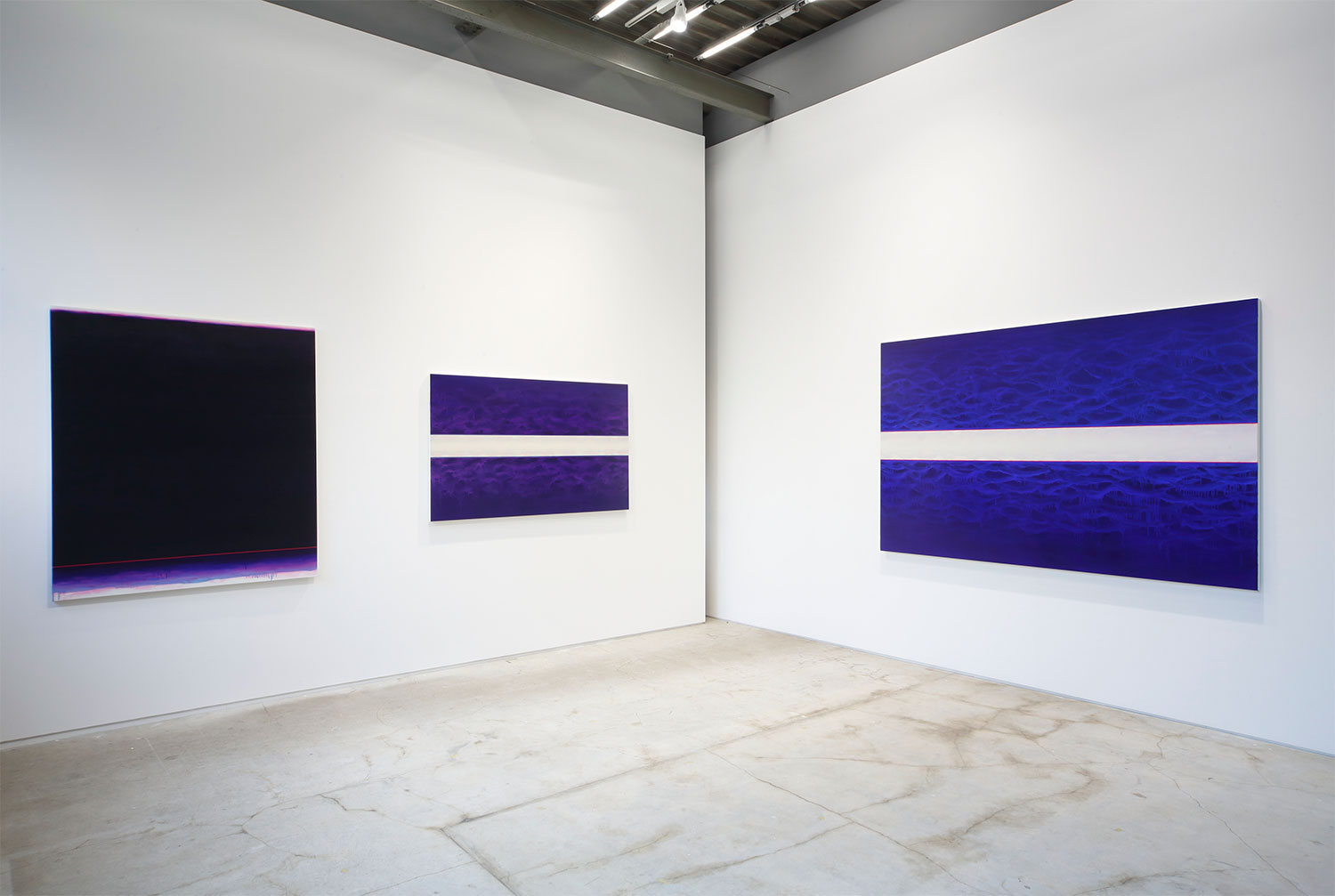The exhibition title, “Something on the Planet,” can’t be more ambiguous. It means anything imaginable, or nothing specific. It’s a sign of either the ultimate ambition or indolence of a visual artist. In the case of Teppei Kaneuji (b. 1978), the ambiguity has yielded a cornucopia of tangible exhibits — utensils of daily life, toys and other found objects — and a desert of impalpable symbolisms. The works at this exhibition add to both.
One is a 9-cm-thick FRP plank hung on the wall, on which a black-and-white photograph is silkscreened: It looks like a snapshot of some ruined architecture. Black-and-white, mangalike illustrations (of the same thickness) of construction materials or tools surround the photo and compose the work’s irregular contour. Games, Dance & the Constructions (Nowhere Sculpture) #2 is its perplexing title. In front of this, Greenhouse for Something, a house-shaped structure of striped glass sheets containing empty glass or plastic cases, stands on the floor and puzzles the viewer. The Model of Unknown Stage series are capricious recompositions of colorful tiny plastic parts of – probably – dioramas, creating bizarre “stage settings.” Two-dimensional works include abstract collages of cutouts in artificial colors, sometimes garnished with photographic images of glossy substances (draining honey or toothpaste?). Some comprise lenticular panels showing a medley of images mankind has ever seen: sunflowers of Van Gogh, waves of Hokusai, Bruce Lee, Hello Kitty, astronauts on the moon and sharks in the sea. Here Kaneuji overlaps with Shinro Ohtake’s megalomania.
In his previous solo show three years ago, Kaneuji poured plaster over heaps of found objects, as if to blur their reality. Now the artist has grown a little realistic, although his expressions elude all attempts to specify their meanings. Among young Japanese artists, it’s an approach that distinguishes him from others who depend on specific realities – for example, Koki Tanaka, who will show videos related to last year’s earthquake in next year’s Venice Biennale at the Japan pavilion – and there Kaneuji has an advantage, for he doesn’t need the viewer’s sympathy for nor memory of anything specific.



